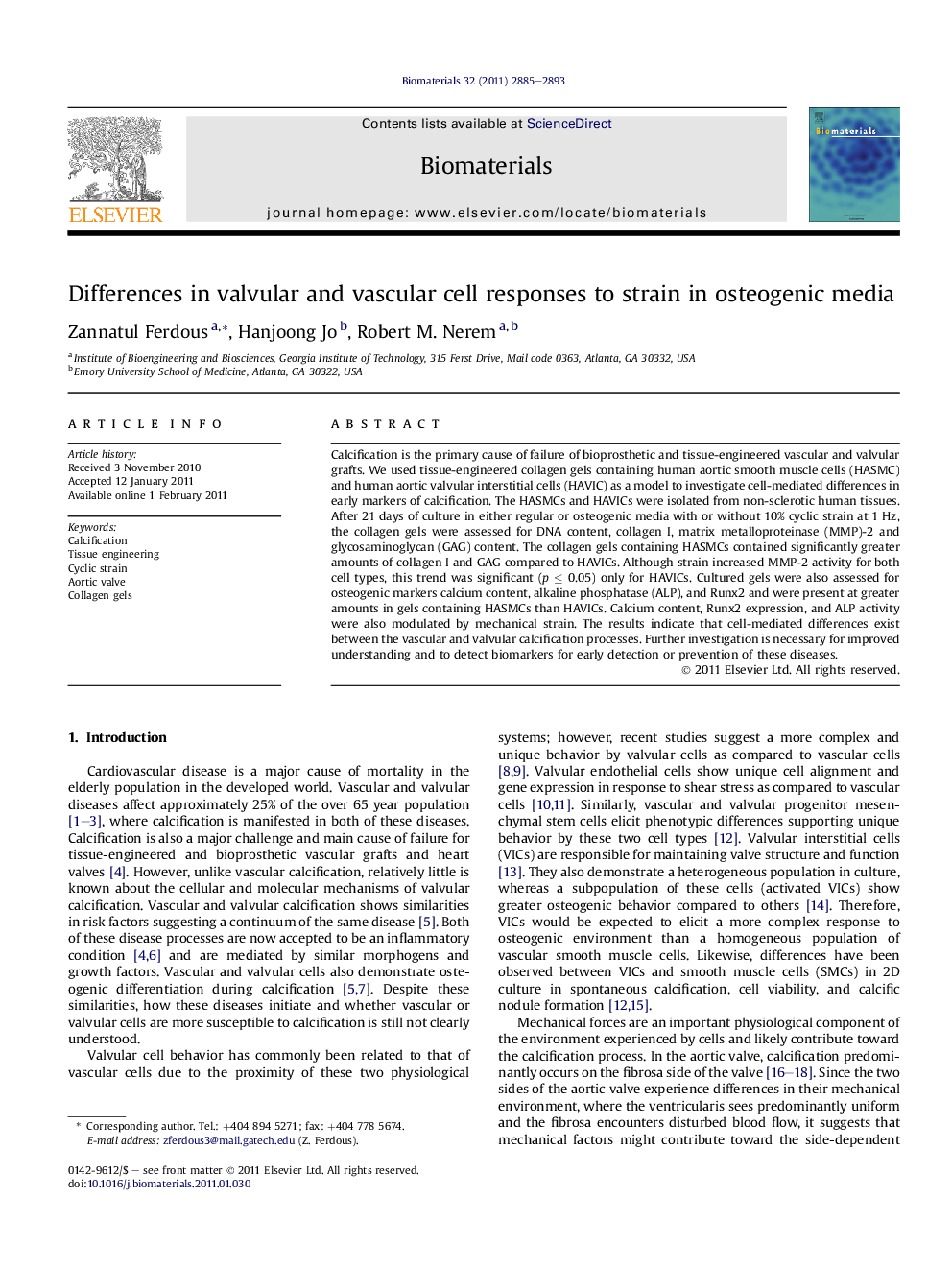| Article ID | Journal | Published Year | Pages | File Type |
|---|---|---|---|---|
| 10229661 | Biomaterials | 2011 | 9 Pages |
Abstract
Calcification is the primary cause of failure of bioprosthetic and tissue-engineered vascular and valvular grafts. We used tissue-engineered collagen gels containing human aortic smooth muscle cells (HASMC) and human aortic valvular interstitial cells (HAVIC) as a model to investigate cell-mediated differences in early markers of calcification. The HASMCs and HAVICs were isolated from non-sclerotic human tissues. After 21 days of culture in either regular or osteogenic media with or without 10% cyclic strain at 1 Hz, the collagen gels were assessed for DNA content, collagen I, matrix metalloproteinase (MMP)-2 and glycosaminoglycan (GAG) content. The collagen gels containing HASMCs contained significantly greater amounts of collagen I and GAG compared to HAVICs. Although strain increased MMP-2 activity for both cell types, this trend was significant (p â¤Â 0.05) only for HAVICs. Cultured gels were also assessed for osteogenic markers calcium content, alkaline phosphatase (ALP), and Runx2 and were present at greater amounts in gels containing HASMCs than HAVICs. Calcium content, Runx2 expression, and ALP activity were also modulated by mechanical strain. The results indicate that cell-mediated differences exist between the vascular and valvular calcification processes. Further investigation is necessary for improved understanding and to detect biomarkers for early detection or prevention of these diseases.
Related Topics
Physical Sciences and Engineering
Chemical Engineering
Bioengineering
Authors
Zannatul Ferdous, Hanjoong Jo, Robert M. Nerem,
